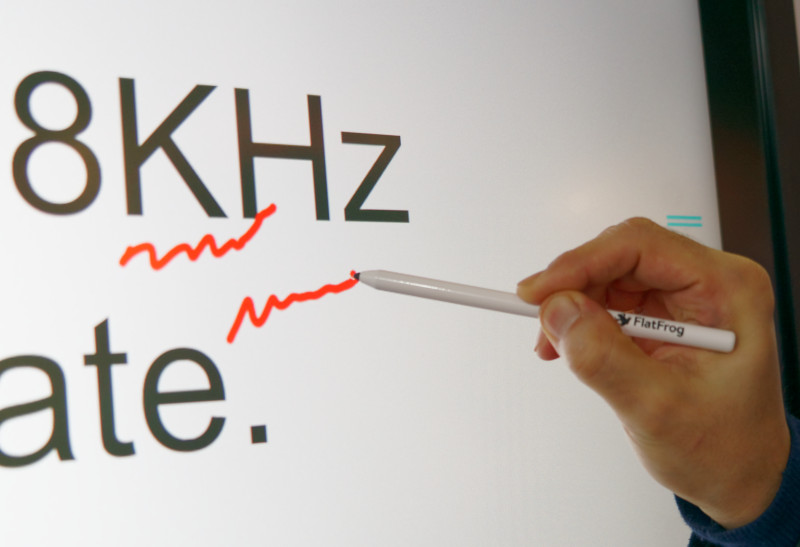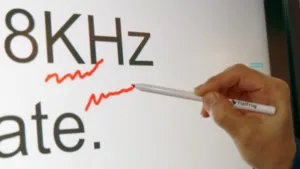FlatFrog has been having a good time since we first reported on them from ISE in 2015, when we highlighted the company as one of the most interesting companies at that year’s event, although we first reported on them in 2010. The latest big win is the Samsung Flip display.
The company has been racking up wins for its touch technology, which started as just a system that used ‘frustrated TIR’. However, to make the system more accessible (the TIR system needs special glass, which can be a limit), the company used the algorithms it had developed to do a better job using a more conventional infrared approach. The technology means that the firm can better detect the shape of objects blocking the infrared. That allows support of different sizes of stylus and palms.
 FlatFrog’s technology works with bonded panels which means little parallax and better accuracy. Image:Meko
FlatFrog’s technology works with bonded panels which means little parallax and better accuracy. Image:Meko
At the show, the company was showing how its technology works on panels that have been optically bonded and that reduces the parallax between the stylus and the display and makes pen-based touch much better. (It has long been an understanding in the interactive display business that the reason that the Microsoft Surface Hub was delayed so long was the difficulty in achieving a very small parallax error, which meant that optical bonding was essential).
In developing its touch, it needed a whiteboard app to better demonstrate its touch sensitivity. For example, when you use an erase palm on a line drawn with the Microsoft Whiteboard app, the whole line is erased, rather than just the the part where the hand is. By luck, the company showed the app, developed just for internal use, to Intel, which was looking for an app for its Unite platform and has adopted the software. The app is in the Unite App Store, we heard.

